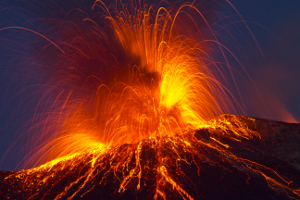Volcanic Gas, Water and Sediment Analysis

Volcanic activity is a constant threat in many parts of the world, making it crucial to monitor and analyse the gas, liquid and sediment emissions from volcanoes.
Hiden’s mass spectrometer systems offer an effective solution for direct real-time analysis of volcanic gases, water and sediment in both the field and laboratory.
Related Products
Direct gas sampling is ideally suited for long-term surveillance of volcanic systems because it produces a detailed chemical analysis of specific fumaroles and vents. Volcanic gas samples are typically collected by inserting a chemically inert and durable tube into a hot fumarole. After allowing the tube to heat until condensation in the tube reaches equilibrium with the escaping gases, either a specially-designed evacuated-sample bottle or a flow-through sample bottle is attached to the collection tubing. Typically, the full suite of major volcanic gases in the sample can be determined, including water, CO2, SO2, H2S, HCl, HF, CO, and H2, other gases such as nitrogen (N2), oxygen (O2), helium (He), and neon (Ne), if present, plus other trace gases. Fumarole temperature plays a large role in determining the quality and utility of direct samples. The higher the temperature, the better the sample will reflect the conditions of the magma supplying the gas.
Direct gas sampling of fumaroles is not well suited for monitoring rapidly changing conditions because laboratory analyses often take days or weeks to complete. However, detailed gas composition analyses often provide critical information for evaluating volcanic hazards and constructing models that provide insight into the condition of the magma at the depth from which the gases originated.
Isotopes uniquely distinguish sources of volcanic gas. Although sample collection vessels can be slightly different, the procedure and cost is generally similar for collecting gas samples from fumaroles for isotope analysis. Isotopes of light elements, such as hydrogen, carbon, nitrogen, and oxygen, as well as those of noble gases, such as helium, can provide insight into the origin of the volcanic gas and the degree of dilution by atmospheric gases.

